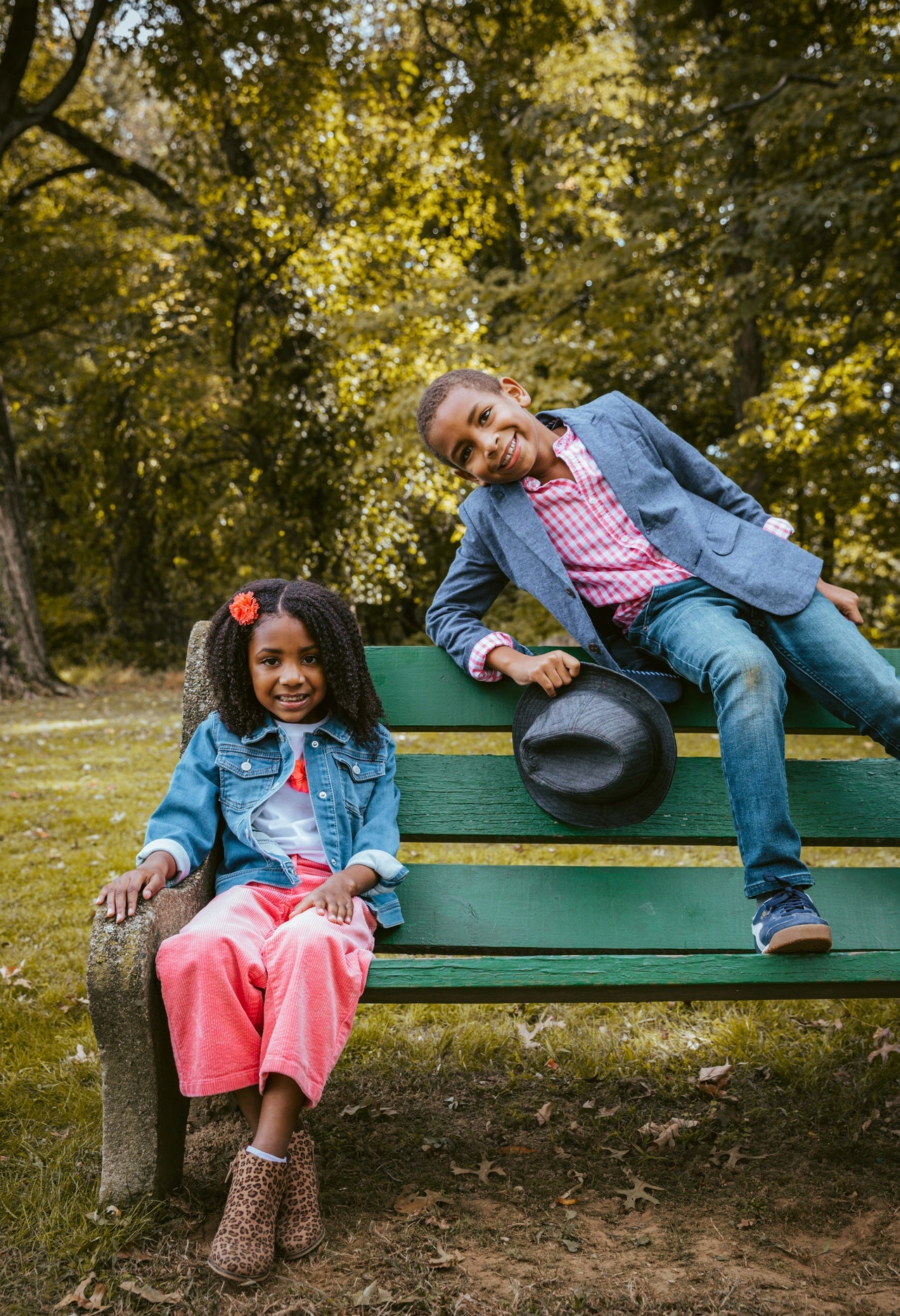Pattern Players: Kwandaa Roberts of Tiny House Calls
When she's not seeing patients or chasing around her two young children, Dr. Kwandaa Roberts can be found using her precise surgical skills in an unexpected way: designing and creating miniature homes. What began as a creative outlet has now blossomed into a hugely popular Instagram account, Tiny House Calls, where Kwandaa shares her (very) small-on-space, big-on-style dollhouses with nearly 45,000 followers. Her incredibly realistic and ultra-chic mini interiors have landed her on the pages of Country Living, HGTV Magazine, and BuzzFeed, and have left Team H&W (among many, many others, we can surely assume) with our jaws on the floor. We caught up with this OB-GYN/mom/dollhouse extraordinaire to chat all things tiny, translating her small style to her real life home, and more.
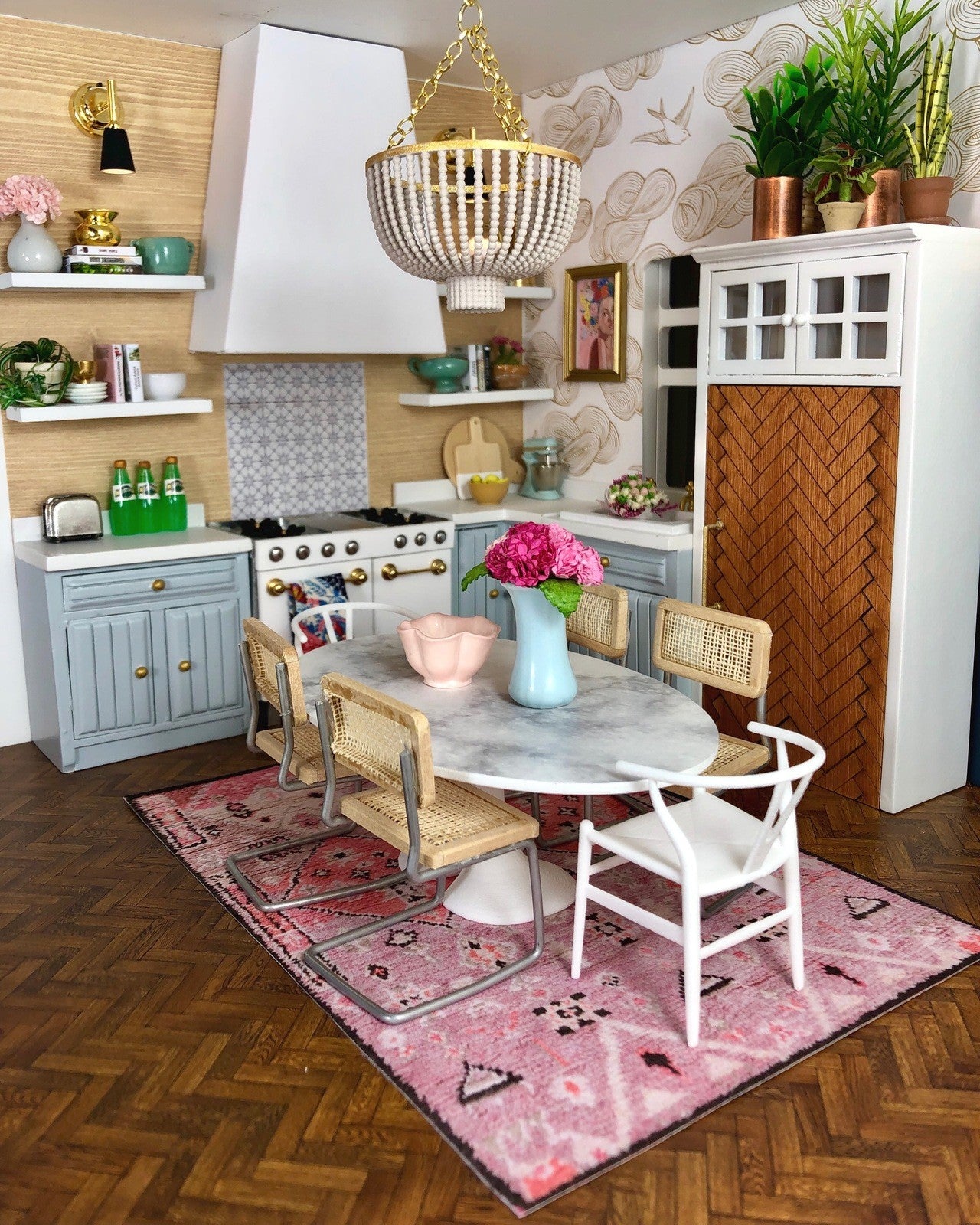
Tell us a little bit about your background and how you first became interested in designing/creating miniature homes.
I am an obstetrician and gynecologist from Philadelphia, and a single mom of two beautiful children, who greatly influence my design style. Growing up, I dreamed of being a physician, but I always harbored a passion for interior design. I was constantly redecorating my bedroom, and I lived for the yearly IKEA catalog. In the days before HGTV, I was obsessed with This Old House. Throughout my medical career, I would decorate the homes of friends and coworkers, but usually it's my own house that bears the brunt of my serial redecorating.
I bought my then four-year-old daughter a dollhouse for Christmas and gave it a makeover. I had so much fun, I would get up in the middle of the night to play with it. I decided then to buy dollhouses for myself as a creative outlet. I figured it would be cheaper than changing out the chandeliers in my real house every six months in my real house. I posted the first dollhouse I completed on social media and it quickly went viral.

What's your favorite thing about working in miniature? What's the biggest challenge?
My favorite thing about working in miniature: the sky's the limit! I can design as many kitchens as I want without breaking the bank. It allows me to embrace multiple different design styles and I can be as daring as I want. Plus, it's just really cute. The biggest challenge is that it's so tiny. I have blown items away while trying to spray paint them. I knock entire rooms down with a sleeve or my hair. I definitely think being a surgeon helps me maneuver in such small spaces. I actually use surgical tools in my dollhouse work.
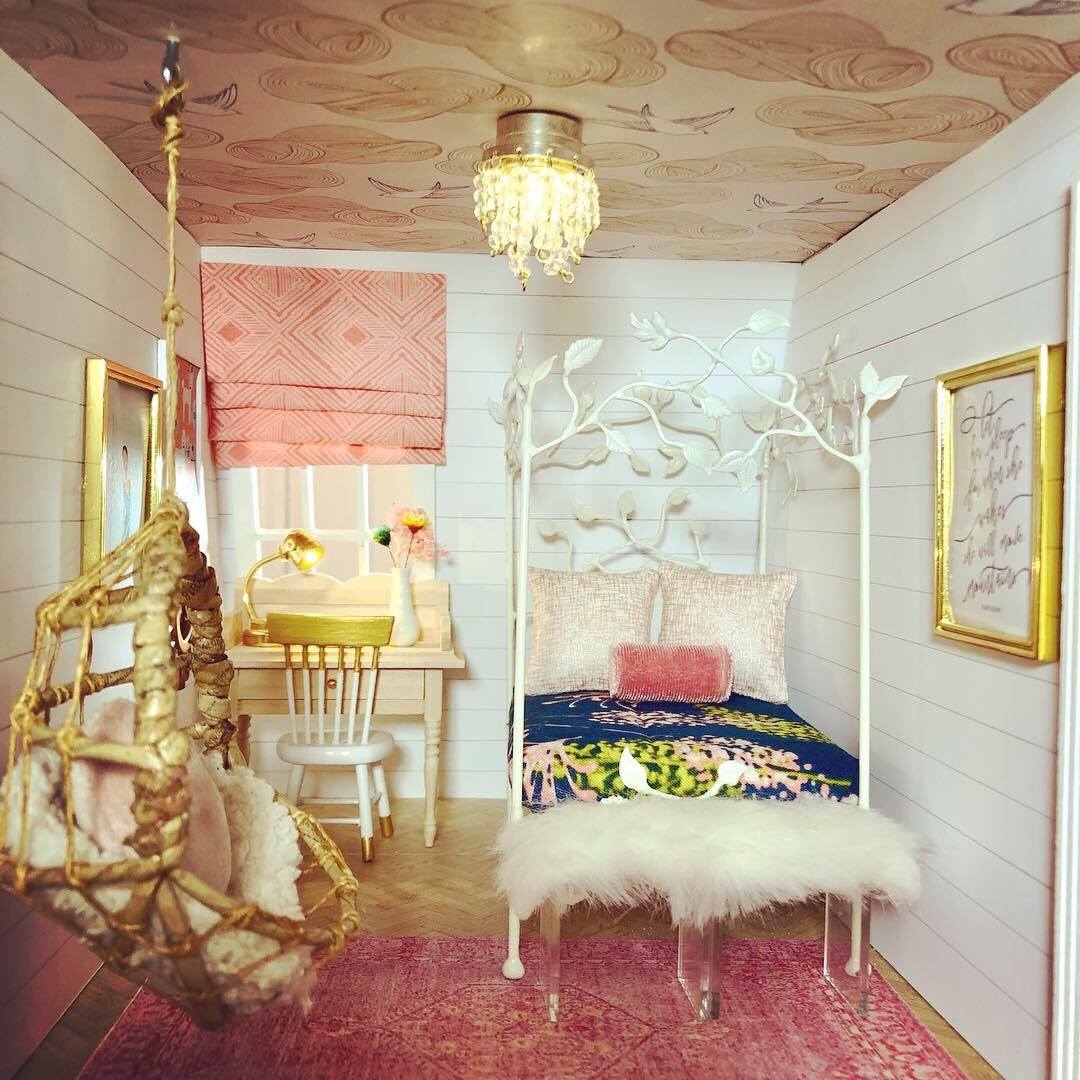
In what ways does designing in miniature differ from designing in real life?
The biggest difference in designing in miniature versus in real life is scale. If you don't get the scale right, the rooms look off and unrealistic. The spaces are typically dark, so it's important to create the illusion of a light-filled space by using different textures. It can be challenging to edit what I put into the dollhouses. The items are so adorable, sometimes I want to use them just because of their size. But now I ask myself if I would use an item in my real house. If the answer is no, I don’t use it in the miniature houses either.
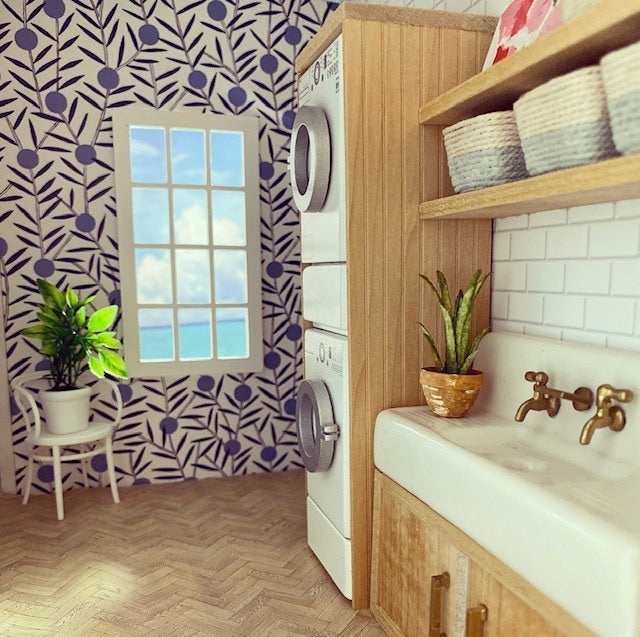
What are your favorite ways to use pattern in your miniature houses?
I love using wallpaper in my dollhouses. It gives the rooms depth, and adds to the realism of the scenes. Without pattern, the rooms can seem one dimensional. For me, nothing brings a room to life, large or small, like pattern.

You've used Daydream in your miniatures—a bathroom, bedroom, and kitchen—as well as in real life in your daughter's bedroom. What drew you to this pattern? What do you think it adds to the spaces in which you use it?
I'm kind of obsessed with Daydream. I'd probably use it in every room in my house if that wouldn't look, well, just silly. I stumbled upon the pattern and Hygge & West when I was looking for wallpaper for my daughter's room. I hacked an IKEA daybed with chinoiserie fabric. As odd as it sounds, the pattern looked too busy next to a solidly painted wall. I couldn't find a color that didn’t compete with the headboard, and I didn't want a white accent wall. Daydream in Gold is perfect. It is like the jewelry that was missing from the room. I think Daydream is a chameleon. It looks great in both kids' spaces and sophisticated adult rooms. The motif looks fabulous on the ceiling, and also when used as accent. It's just dreamy.
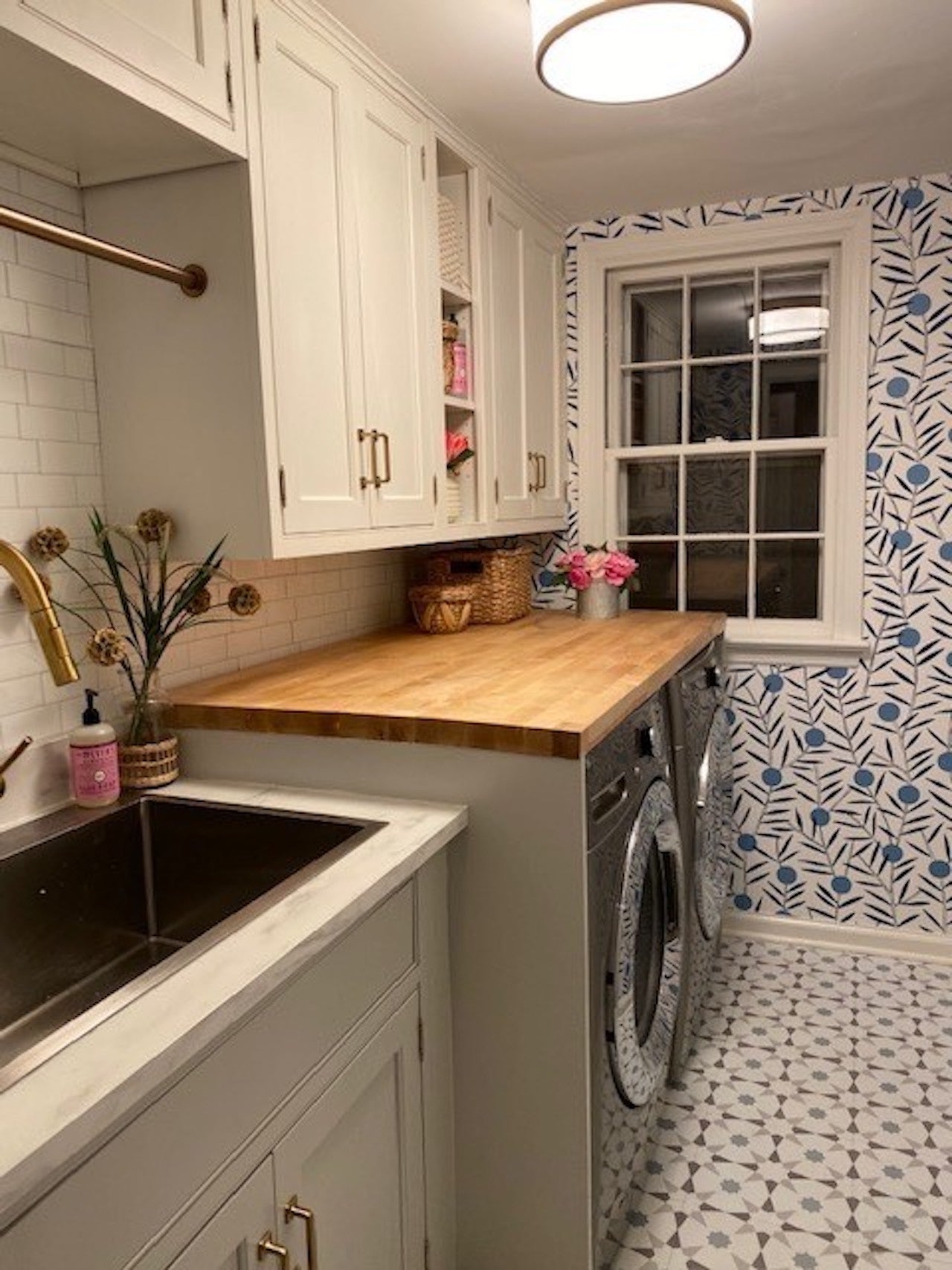
You also recently used Bloom (Bluebell) in your laundry room makeover. Tell us a little about this space.
My laundry room is really small, and with old metal cabinets and beige linoleum floors, it was a sad room that I didn't want to spend time in. When a broken washing machine lead to a makeover, I knew I wanted wallpaper to liven up the space. I was drawn to Bloom because it looks so fresh, and it has so much movement. I knew it would make the laundry room a happy place. And also, the washer plays a little song when it's done, so there's that.
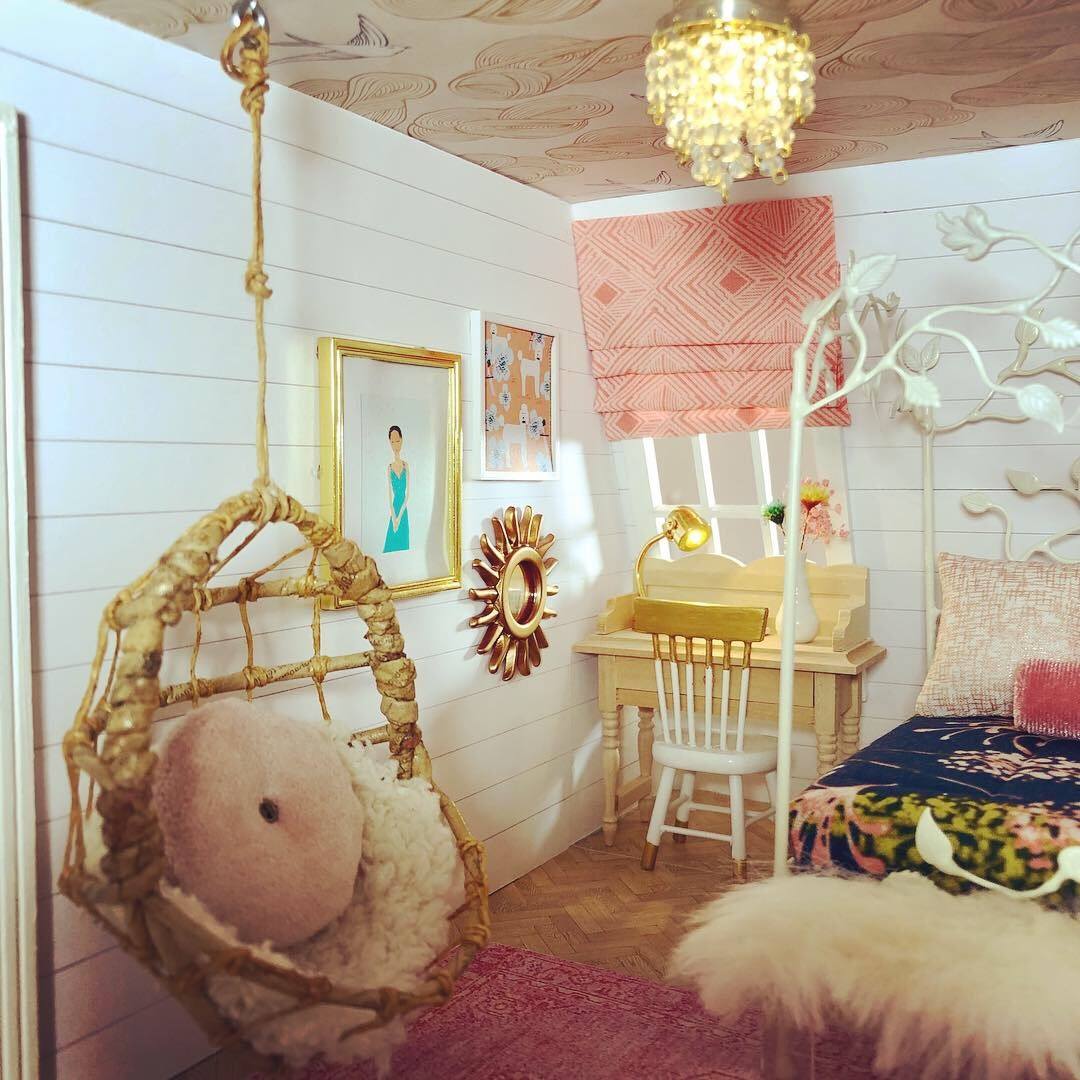
What does 2020 look like for you?
I cannot wait for 2020! I have made some major life changes to be able to spend more time with my children. I would have never predicted how the dollhouses would change my life. I have connected with the most incredible people who have been inspired by my work to remodel long-forgotten family heirloom dollhouses with their grandchildren, or purchase a dollhouse to help get them through a loss. It's been humbling, and I plan to do more miniature work that sparks joy in the future.
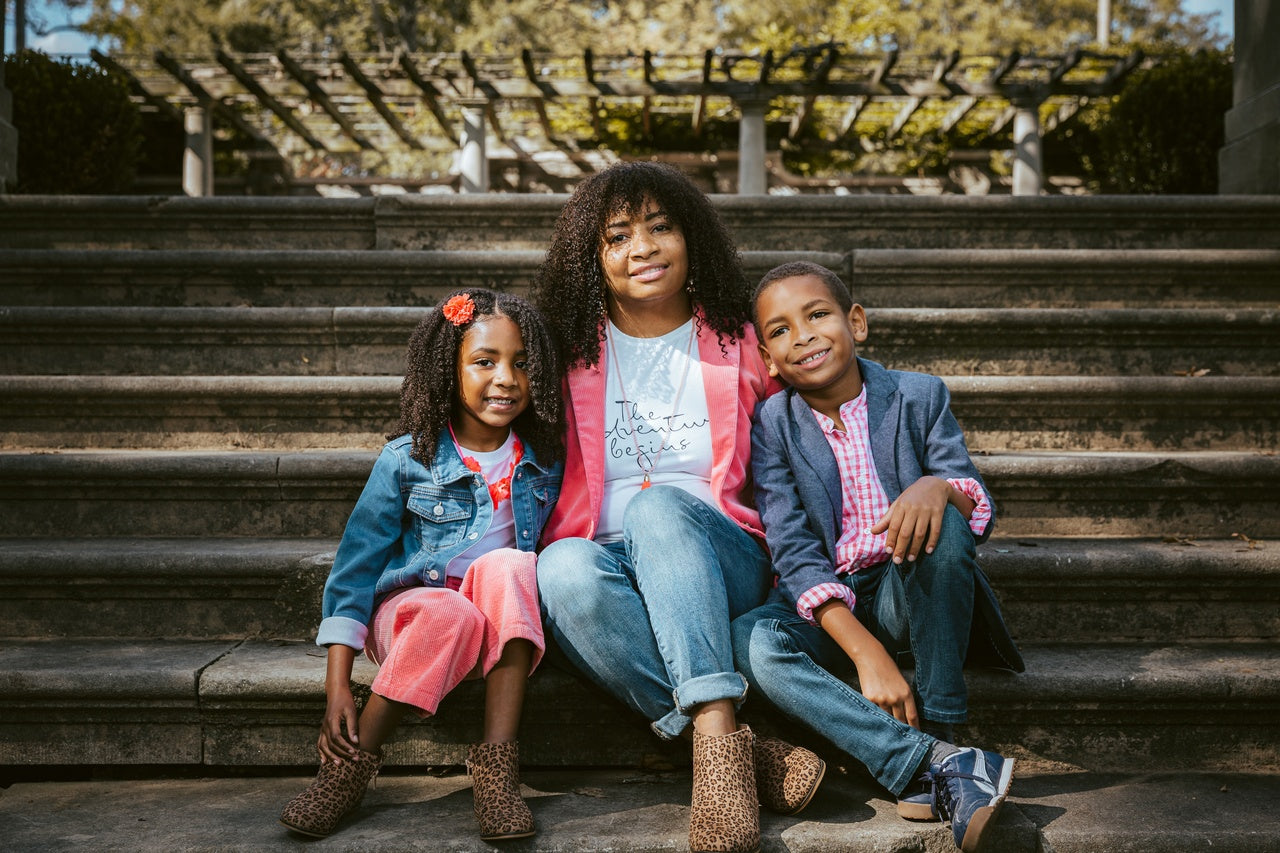
Hygge is a Danish concept of finding coziness in life's small comforts and simple joy. What is hygge for you?
My house has always been a reflection of where I am in life. Before I had children, my house was decorated with soothing neutrals as a respite from my day and night job. Now that I have five and seven year olds, my house is a reflection of my new reality. It's full of color and pattern and texture. My home is just so full of joy. It's my happy place, this time of year and all year.
